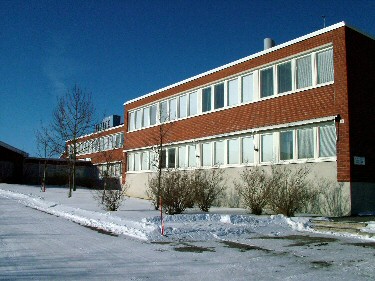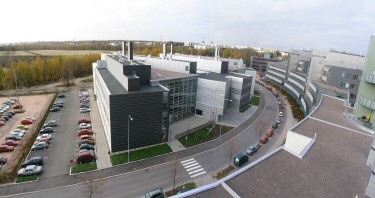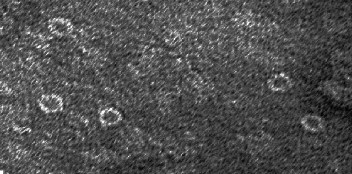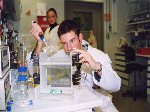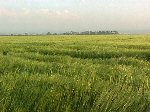Organisation - MTT |
|
|
|
|
|
MTT Agrifood Research (http://www.mtt.fi/english/) of the Finnish Ministry of Agriculture and Forestry produces scientific research and develops new technology for the agriculture and food sectors. Research at MTT covers biology, technology and agricultural economics, promotes the competitiveness of the food industry, quality of the production environment and the rural environment, the vitality of rural areas and their interaction with urban areas, and consumer welfare. Its roots go back to 1898, when it was established as an agricultural research centre.
Under the reorganisation of 2006, the Plant Genomics Laboratory is part of Genomics Research (http://www.mtt.fi/english/research/biotechnology/genomics.html), which includes plants, animals, and microbes, within the Department of Biotechnology and Food Research (http://www.mtt.fi/english/research/biotechnology/biotechnology.html). Genomics Research is directed by Prof. Alan H. Schulman.
The Plant Genomics unit is based in two laboratories, one at Jokioinen and a joint laboratory with the Institute of Biotechnology of the University of Helsinki, which is located in the Viikki Biocenter (http://www.biocenter.helsinki.fi/bi/bare-1_html/bare1.htm). The University of Helsinki (www.helsinki.fi) has the widest range of disciplines in Finland. It was established in Turku in 1640, but was transferred to Helsinki in 1828. The number of faculties is eleven. There are 38,000 degree students and 7,600 staff. The number of degrees taken each year is almost 4,300, of which 400 are doctorates. The Institute of Biotechnology (http://www.biocenter.helsinki.fi/bi/) at the University of Helsinki is an administratively independent unit for promoting research and education in biotechnology, molecular biology, cell biology, and related areas. The Institute was founded in 1989. Its mission is to promote high-level research and graduate training and to integrate the interests of several faculties within the University of Helsinki by serving as a bridge between them in research, technology transfer and post-graduate education.
The Plant Genomics Group carries out research on retrotransposons as drivers of genomic change and as markers for this change, uses these and other marker systems for map-based cloning of genes for disease resistance and quality traits, and analyses the role of candidate genes through the application of functional genomics tools such as microarrays. To support these goals, we develop and apply doubled-haploid populations for mapping purposes in barley, rye, oat, and Brassica. Genome organisation and the role of retrotransposons is currently under study in the emerging model species Brachypodium distachyon. This plant is closer to the Triticeae including barley and wheat than is rice, and should prove very helpful as a scaffold for gene isolation in the important Nordic cereals and grasses. We also have implemented barley transformation using Agrobacterium. Potato di-haploids and fusions have been produced and are being used to engineer disease resistance. The group has a long-term programme to understand the role of retrotransposons in genome dynamics. These mobile elements replicate in a way similar to retroviruses and create daughter copies that integrate throughout the genome. They may also be removed by intrachromosomal recombination. We are interested in establishing the details of their lifecycle, the role of cellular components in controlling their capacity for enormous copy number increase and mutagenic genome disruption, and their effect on genomic and cellular function.
The group also develops and applies retrotransposons as molecular markers for fingerprinting, biodiversity, and breeding applications. Barley is the main plant for basic research, but to date we have developed and applied marker systems for barley, wheat, oat, timothy grass, potato, banana, and oil palm. We also develop and apply microsatellite and SNP-based markers such as can be derived from ESTs. We also carry out pathogen-side research on the net blotch disease of barley, examing virulence in the fungus Pyrenophora teres teres. We are applying the Affymetrix barley microarray platform to analyse grain development and germination as well as biotic (fungal resistance) and abiotic (drought) response and resistance. Earlier, we sequenced 44 000 barley ESTs from 18 libaries, established both the wet-lab and bioinformatics pipeline to do so, and contributed these to the worldwide, American-based efforts that led to the production of the Affymetrix chip. The group has about 30 members currently. We are well equipped for our activities. Facilities in Helsinki include ABI 377, ABI 3100, and ABI 377 sequencers, ScanArray 5000 microarray reader, Qiagen Biorobots 3000 for rearraying ESTs, Qiagen Biorobot 8000 for high-throughput PCR purifications for arrays, Qiagen Biorobot 9600, Tecan Genesis RSP 100, Tecan Genesis 500 for setting up reactions and preparing bacterial stocks, three plate-filling robots, a Genetix Q-PIX for picking colonies, three MJ Research tetrads and five ABI GeneAmp 9700s for EST PCRs for arrays, a Qiagen/Retch 96-well high-throughput DNA prep system, and standard molecular biological equipment including an ultracentrifuge and superspeed centrifuges, growth chambers, flow benches, and electrophoresis boxes. We are currently awaiting during 2006 the installation of a 454 Life Sciences (Roche) GS20 massively parallel sequencer. The Jokioinen lab, in addition to molecular biology facilities, has excellent glasshouse, farm-scale and phenotyping facilities. The bioinformatics group has powerful unix workstations and a new ten-processor cluster at their disposal, as well as the requisite databases, programming tools, and applications both written locally and obtained as packages.
Selected Publications (http://www.biocenter.helsinki.fi/bi/)
|
|
Barley Genome Net - Organisation - IPK |
|
|
|
|
|
|
